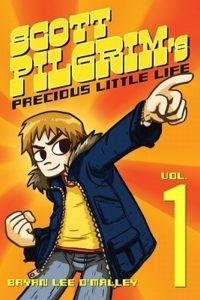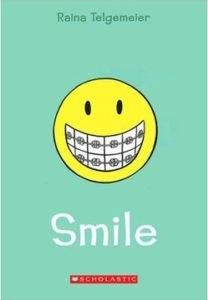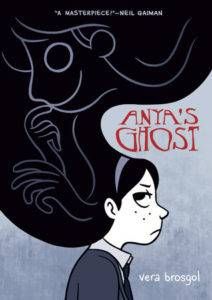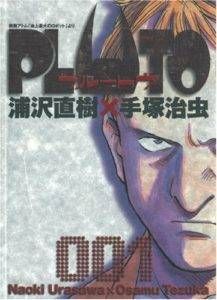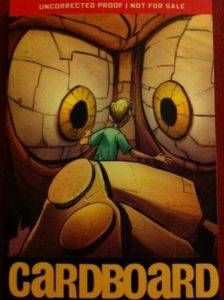
How One Teacher Used Graphic Novels to Get His Students to Love Reading
Zac Clarke had been teaching Special Education at the High Tech Middle Media Arts charter school in San Diego for three years when he was inspired to begin connecting his students with graphic novels. Since then, he has continued to supply his students with graphic novels to read, funding the collection primarily through grants and crowdfunding. His first graduates still pop by to re-read their old favorites, and each year he is able to introduce a new group of students to the joy of reading.
We sat down with Zac to learn more about the ongoing success—and challenges—of his project, and which titles he and his students recommend for reluctant readers.
Hi Zac! Thanks for chatting with us today. To begin with, could you please tell us about your school and students? How diverse a group of kids are we talking about here?
High Tech Middle Media Arts (HTMMA) is part of a bigger High Tech group of schools. To apply, our students’ names go into a lottery that is weighted and sorted by zip code to ensure we get students from all over, and with different backgrounds. I have literally had homeless students in the same class as the children of millionaires.
In terms of cultural background, we have a large Latinx population, including a few students each year who live in Tijuana and drive across the border every day to go to school. We also make sure to get an almost even mix of boys and girls. As a Special Ed teacher, I work mainly with students in Grades 6-8, but if a student is having an hard time with something, I can jump in to help no matter their grade level.
My work in Special Ed is to provide support to students so they can participate with the rest of their peers. There is no separate class, which makes us plan instruction to accommodate a wide range of learners and skill levels.
What inspired you to begin your classroom Graphic Novel Library?
About 30 minutes into a meeting with the parent of a student on the autism spectrum, the student was clearly bored. I let him go sit on a bench outside the room, and offered to lend him a copy of the first Scott Pilgrim graphic novel, which I had on hand. I continued to meet with his mother for another hour, during which time the boy knocked on the door, asking for the second volume as he’d finished the first.
The next day, he started taking the books to silent reading time in class and his friends (many of whom didn’t usually enjoy reading) also wanted to read them. Before I really knew what was happening, I had a sign-up sheet for the Scott Pilgrim series in my office, with a wait list for each volume. So, I decided to lean into the excitement by buying more graphic novels for them to read.
Since I don’t have a budget, I have always had to hustle for money. I have done a few fundraising campaigns through Donors Choose, and I have one going on now if anyone wants to donate. I’ve also managed to get a handful of literacy grants and other such things. The budget is always tight. Unless there is something new coming out that the kids just have to have right away (like the new volume in the Amulet series), I buy second hand and just hope they are in good condition when they arrive.
How do you run the library?
The school has no library proper, so I keep the collection on three Ikea shelves in my office. Currently, we have about 450 books. I have tried using a card pocket sign-out system, but it was basically an honor system and sometimes I’d lose track of titles. A couple of years ago I tried to go digital, mostly for data tracking. I use an app called booksource that helps you make a checkout system for your classroom library. I add books to the system by scanning the ISBN on my iPhone, then the kids use one of the school’s iPads to check items out. Unfortunately, this iPad is ancient and the camera isn’t high-resolution enough to scan, so the kids have to sign out manually using the app. This leads to more human error and items going missing. I really don’t quite know what to do about this. If any one has any suggestions, I’m all ears!
Do you have stories or examples of notable experiences or conversations you’ve had with students, other teachers, or their parents about the library?
I talk the library up with students a lot, but parents aren’t always supportive. While parents do appreciate that their kids are reading, they often want me to push them to read “real books.” I try to explain that I have stuff of all reading levels, and that when a student is ready for it I can recommend something more challenging, but that doesn’t seem to persuade them. I find there is still a stigma among this generation of parents that anything like a comic is trash. I think it’s their memories of the Archie and Richie Rich comics of their childhood, and that they are unaware of the explosion of the genre (in English) that has happened in the last 25 years.
In the graphic novel world there hasn’t really been a mainstream hit to provide a mass socially accepted entry point to the genre, like Serial did for podcasting. Some works like Maus and Persepolis have of course done well with adults, but nothing has really caught on fire to show parents the complex layered narratives, the depth of emotions, and the beauty that graphic novels can deliver.
My big focus is on literacy and I love how graphic novels support students while they develop their reading skills. Graphic novels allow these students to enjoy more interesting and complicated plots than they usually get in books at their reading level. As an example, I had a 7th grader, let’s call him José, who was fake reading during the class silent reading time. He had several learning disabilities going on at once that effected his expressive and receptive language, as well as his reading.
José’s 6th grade teacher had read Hatchet out loud, stopping as they went to clear up anything that students might find confusing. This may have been one of the first times José had made it through a whole novel and understood what was happening. He loved that book, telling everyone that Hatchet was his favorite book. The next year, he was really excited to read the sequel on his own. His teacher tried to direct him to something else, since she knew that the book would be too hard for him. That’s when I got a text asking for help.
At first, José balked at the idea of reading a graphic novel, seeing them as “baby books.” So, I cut him at deal: if he read Scott Pilgrim #1 and came back to talk to me about it, I would buy him his own copy of the Hatchet sequel and let him read it. We shook on it. He came back a few days later, excited to talk to me about Scott Pilgrim. Since he met his end of the deal, I told him I’d get him the Hatchet sequel. But he told me to wait on it, because he wanted to read Scott Pilgrim #2 first.
He worked his way through the series and then just kept on going. José’s in the 10th grade now and still comes down to check out books. He prowls for anything new because he has pretty much read everything I have—hundreds of books. His reading ability jumped just from the sheer practice he was getting; his teachers had to start taking books away from him in class because he was reading rather than participating in class.
I have seen dozens of kids like José come through. Usually, I have to fight them at the beginning and then, once they get hooked, they are in my office picking out books constantly.
What tips do you have for other teachers or group leaders wanting to begin a similar project?
Just jump in! Don’t ask for permission or approval, and don’t even tell anyone that you are doing it (other than the kids). Once it catches on you won’t have to justify yourself. Another thing that I did early on was start referring to my collection as “The Graphic Novel Library.” It sounded official and important, even when I only had one shelf with two dozen books on it. Because of the name everyone took it seriously. I think that’s partially why I was successfully at getting grants and donations. The library has since grown into its name.
How do you decide which books to include in your library?
I try to stick to the following selection rules as much as possible:
1) No nudity, especially in a sexual way. I don’t have a problem with it, but I know some parents would and I don’t want to fight that battle.
2) Swearing and violence have to be balanced by literary value. I don’t mind sticking up for a book and fighting back against an angry parent if I think it’s an important book for kids to read. But if I don’t think the book’s other qualities justify the violence or swearing, and I deem it gratuitous, then the kids can check it out from their local library.
3) Only positive or neutral depictions of women. This means no women as big-breasted objects for boys to ogle; they have to be real characters. This one rules out a lot of comic books but makes the library more inclusive. It has also forced me to read most of the books to make sure that the women characters are as three-dimensional as the male characters.
What are your top picks for teachers wanting to build their own graphic novel libraries, or for parents or teens looking for great graphic novels to read?
 Scott Pilgrim series by Bryan Lee O’Malley.
Scott Pilgrim series by Bryan Lee O’Malley.
This is and has been the most popular series on my shelf bar none. I think it’s perfect for middle school, despite the swearing and drinking and “sexual situations,” because Scott is essentially a middle schooler in a 24(?) year old’s body. He doesn’t understand relationships, he’s awkward, and he makes a lot of mistakes—so much for a middle schooler to relate to.
 Smile, Drama, Ghosts, and Sisters by Raina Telgemeier
Smile, Drama, Ghosts, and Sisters by Raina Telgemeier
No student who reads one of these doesn’t read the rest of them, and from there I can steer them to new authors.
Maximum Ride Manga by James Patterson and NaRae Lee and Amulet Manga by Kazu Kibuishi
Both of these series have my students fighting over the next book. The tough part is neither series is finished yet, and when the students get to the end I have to try to find them something else.
 Anya’s Ghost by Vera Brosgol
Anya’s Ghost by Vera Brosgol
I’ve had to replace this book more times than almost anything else (except for the Scott Pilgrim books). I think students expect a fun ghost story when they pick it up and then it turns a little sinister on them. Middle schoolers love scary and creepy things.
 Pluto by Naoki Urasawa
Pluto by Naoki Urasawa
This complex and tense series is my go-to for higher readers. It starts as a futuristic detective mystery and then becomes more of an epic as it goes on. Usually they come back after the last volume of that one and are unable to talk to me about it. They want to talk about it but they get overwhelmed and don’t know where to start; it’s awesome. Unfortunately I don’t have anything at that level that can direct them to next that’s both similar and appropriate for middle schoolers. If anyone has ideas let me know!
 Cardboard by Doug TenNapel
Cardboard by Doug TenNapel
This, and his other titles, are great for lower readers. His books are high interest and low reading level and always a hit.
Zac is currently crowdfunding for money to help replace his most-loved titles. Click here to help out.
This interview has been edited and condensed.



